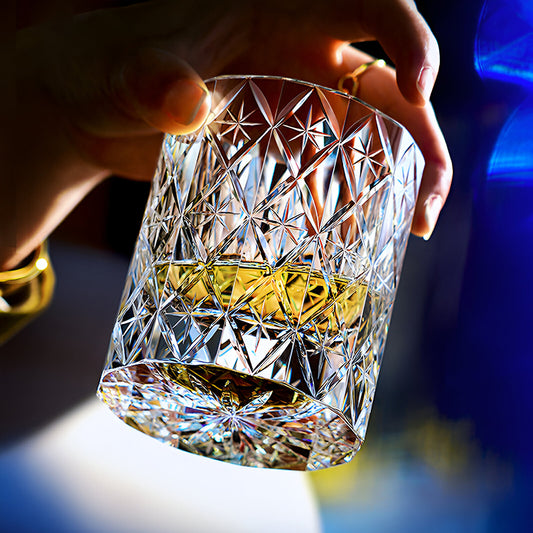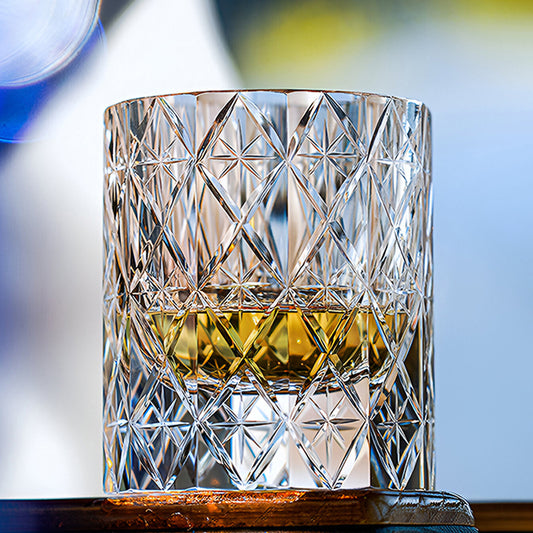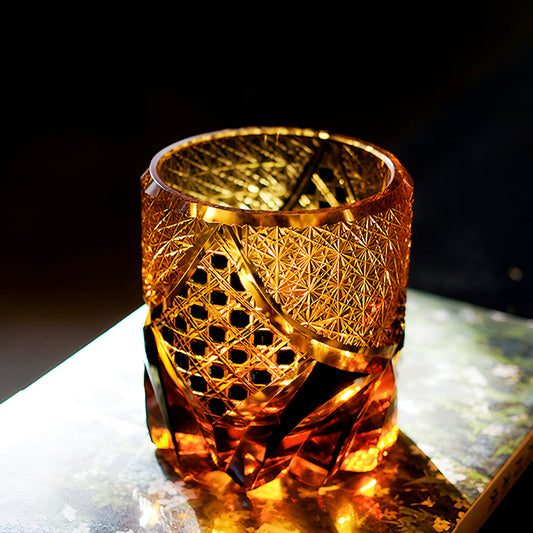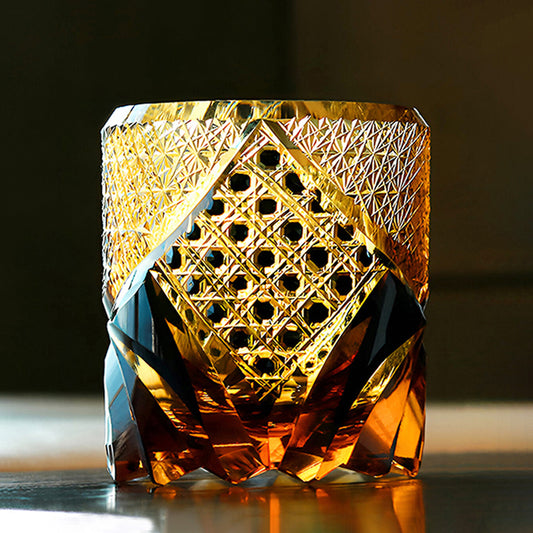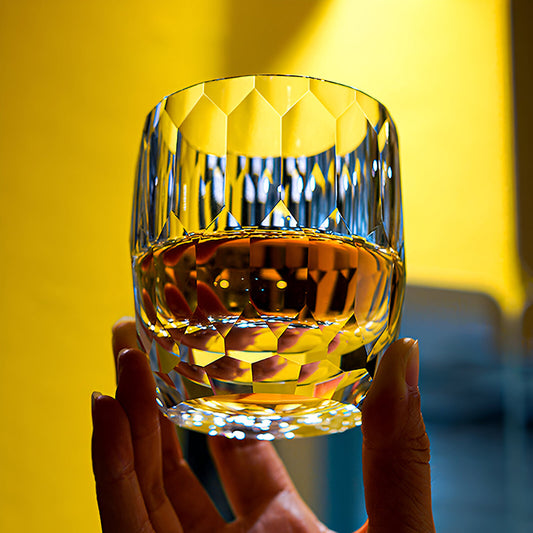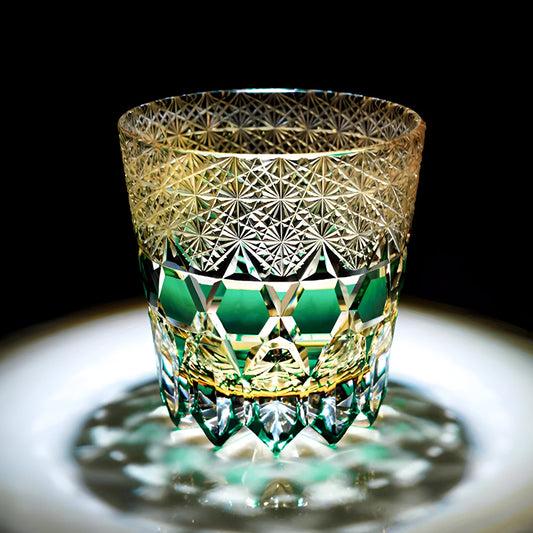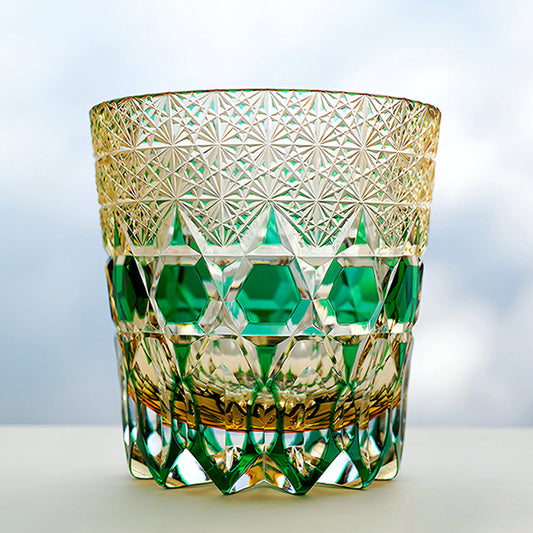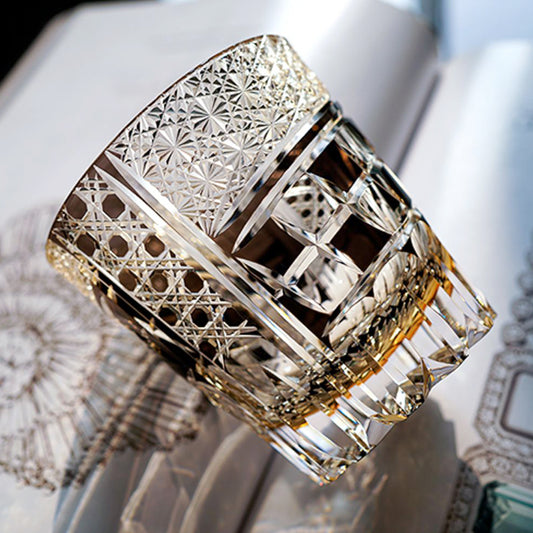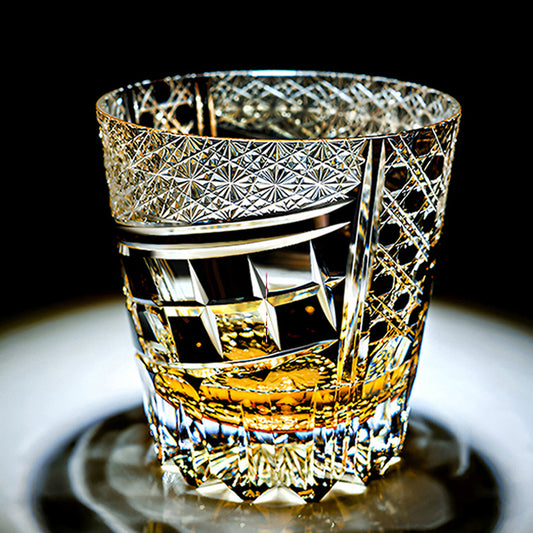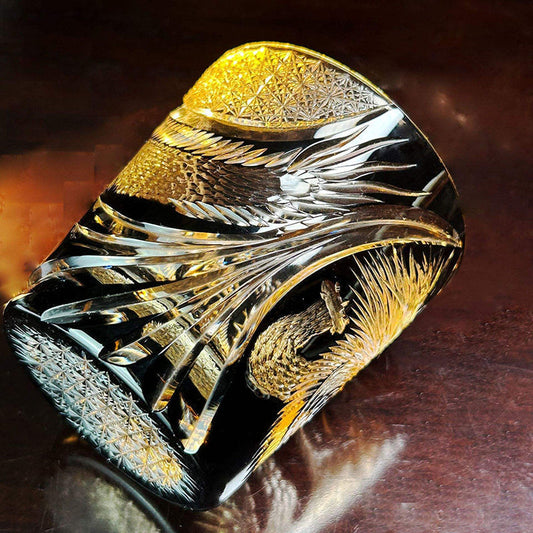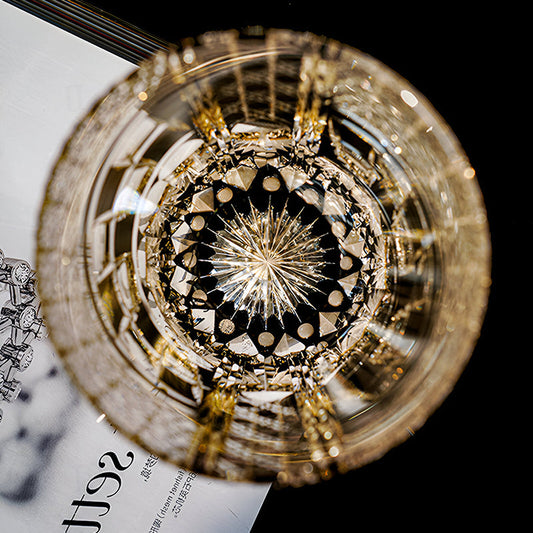Edo Kiriko is a traditional glass craft originating from the Edo period in Japan, renowned for its pure colors and intricate patterns. It is a technique of carving patterns on the surface of glass, also known as cut glass. Artisans meticulously design and polish, creating beautiful patterns on the glass, giving it a mesmerizing play of light and shadow. The bottom of Edo Kiriko resembles a frozen kaleidoscope, dazzling and breathtaking.
The History of Edo Kiriko
Edo Kiriko is said to have been founded in 1834 in Odenma-cho, Edo (present-day Tokyo), by Kagaya Kyubei, who ran a glass shop. Kyubei learned glassmaking techniques in Osaka and upon returning to Edo, he started a glass shop producing items like eyeglasses and thermometers. It was from this time onwards that carved glass in Edo began to gain popularity.
In the early Meiji period in 1876, the Japanese government implemented a policy to catch up with Western industries, leading to the establishment of the Shinagawa Glass Manufacturing Plant. This marked Japan's first production of modern glass.
In 1881, the British technician Emmanuel Hoffman, who possessed the most advanced technology at the time, was hired and taught this technique to apprentices. Thus, the traditional craftsmanship that had existed since the Edo period combined with the most advanced industrial technology of the time, giving rise to the unique charm of Edo Kiriko.
The Characteristics of Edo Kiriko
In the Edo period, Edo Kiriko was originally colorless and transparent. It featured traditional patterns designed on the surface. To enhance the variety of designs, a thin layer of colored glass was later added on the outside of the transparent glass. When cutting the glass cup, the colored part is removed, revealing the transparent part.
The patterns of Edo Kiriko produced during the Edo period were primarily based on fish roe. The predominant design at that time was a pattern resembling the arrangement of fish roe granules. Nowadays, the patterns used consist of individual fish roe and combinations with other elements such as fences (depicted as arrow rain), chrysanthemums, hemp leaves, and more.
Edo Kiriko is primarily used for sake decanters and cups for drinking Japanese sake, as well as Western-style wine glasses, rock glasses, and other items like ornaments and flower arranging tools.

The craftsmanship of Edo Kiriko
Selecting Glass
Initially, artisans choose high-quality glass blocks or glassware as the material for production. This glass is typically transparent, facilitating subsequent cutting and engraving processes.
Designing Patterns
Craftsmen design suitable patterns based on the shape and purpose of the vessel. Traditional patterns include fish roe, chrysanthemum, and lattice patterns, each with unique cultural meanings.
Once the design is finalized, craftsmen mark the carving outlines on the glass surface using a pen or wax.
Rough Cutting
Craftsmen use rotating copper wheels or diamond wheels to perform initial cutting along the marked outlines. This step requires high precision to ensure symmetry and consistency of the patterns.
Rough cutting aims to carve out the basic shape of the pattern.
Fine Cutting and Polishing
Building upon rough cutting, craftsmen use finer grinding wheels for detailed carving to make the lines of the pattern clearer and more delicate.
This step requires craftsmen to have exceptional patience and skill to ensure each pattern is flawless.
Polishing
After carving is complete, craftsmen polish the glass surface to remove any burrs and unevenness resulting from the cutting process.
The polished glass surface reflects light beautifully, showcasing captivating light and shadow effects.
Inspection and Finishing Touches
Finally, craftsmen carefully inspect each piece to ensure the integrity of the patterns and the practicality of the vessel.
If necessary, craftsmen make final adjustments to details until the piece reaches a state of perfection.

The pattern of Edo Kiriko
Fish roe pattern
Composed of dense small dots resembling fish eggs, commonly used to decorate bowls, cups, and other vessels, symbolizing prosperity and abundance.
Chrysanthemum pattern
Inspired by chrysanthemum flowers, petals unfolding in layers, symbolizing longevity and auspiciousness, commonly found on high-end tableware.
Lattice pattern
Formed by intersecting lines into diamond or hexagonal shapes resembling bamboo baskets, symbolizing protection and security.
Hemp leaf pattern
Imitating the geometric pattern of hemp leaves, symbolizing healthy growth, commonly used on children's items.
Seven treasures pattern
Composed of overlapping circles, symbolizing infinite cycles and harmony, representing good luck and happiness.
Arrow rain pattern
Formed by intersecting straight lines resembling a fence, symbolizing defense and protection.
Thunder pattern
Consists of continuous zigzag lines, symbolizing strength and majesty, often used to enhance visual impact.
Flowing water pattern
Imitates the curves of flowing water, symbolizing movement and change, representing the passage of life and time.

As a treasure of Japanese traditional craftsmanship, Edo Kiriko not only showcases the ultimate beauty of glass art but also carries profound cultural significance and historical heritage. Each piece of Edo Kiriko work embodies the dedication and wisdom of craftsmen, seamlessly blending the beauty of nature and human spirit through the interplay of light and shadow. Whether it be the fish roe pattern symbolizing prosperity or the chrysanthemum pattern representing longevity, these exquisite patterns make Edo Kiriko a unique piece of art.
Today, Edo Kiriko is not only used for traditional sake utensils and vessels but has also found its way into modern life, becoming exquisite crafts for various purposes like accessories and flower vases. It serves not only as a symbol of Japanese culture but also shines as a brilliant gem in the world of glass art. Through Edo Kiriko, we can not only sense the craftsmen's relentless pursuit of their craft but also experience the harmonious coexistence of tradition and modernity, nature and human culture. This magical play of light and shadow will continue to illuminate people's lives with its unique charm, carrying on the craftsmanship of thousands of years.



